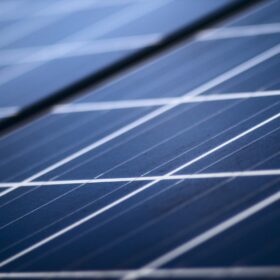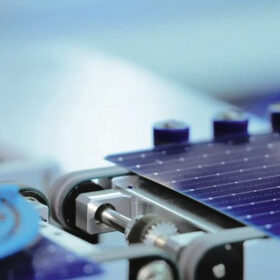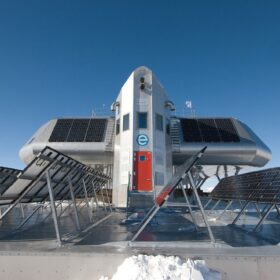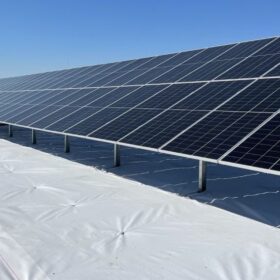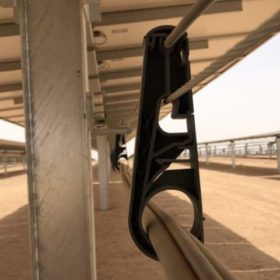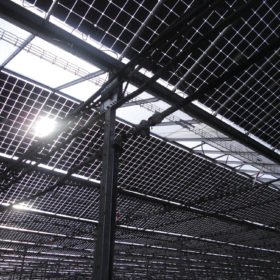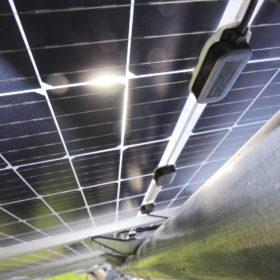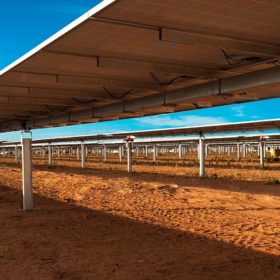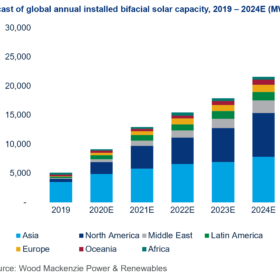Greek utility secures funding for 550 MW PV plant at former coal mine
Greece’s Public Power Corp. (PPC) has secured funding for the construction of a 550 MW solar plant at a former lignite mine. The state-owned utility says that, upon completion, the plant will cover almost 2.5% of domestic electricity generation.
Weekend Read: Getting to the bottom of TOPCon degradation
Should the industry be alarmed at the potential degradation susceptibility of tunnel oxide passivated contact (TOPCon) solar cells? Or are the problems easily addressed and more a reflection of rushed-to-market products? pv magazine contributor and consultant Götz Fischbeck reports.
Weekend Read: The world’s coolest solar
The world’s most efficient energy network, at an Antarctic research base, has had a solar upgrade.
Reflective membrane to increase albedo, energy yield in bifacial PV
Thrace Group has developed a reflective, permeable membrane made of polypropylene resins and coated with a thin white layer that reflects ultraviolet (UV) rays. It claims that the membrane increased the energy yield of a large-scale pilot installation by 4.5%.
PV and the cable guide
While solar modules and inverters can greatly influence the output of a planned solar project, it is important not to overlook how to select and design cabling systems for your solar plant – for safety as well as generation considerations. Ye Qilin, a senior system engineer at Huawei’s FusionSolar smart PV and energy storage business, runs us through some dos and don’ts.
Boosting bifacial panel efficiency with albedo ground covers: Field test results
Tests by 7X Energy show that ground cover material showed promise, but projects will likely still need to prove the long-term durability, degradation rates, and validation of installation labor and O&M.
Satellite-derived datasets to measure ground albedo for bifacial PV
A researcher from the NREL has set up a series of datasets of measured ground albedo values using measurement network data in the U.S. and data contributed by the PV industry. The measured albedo datasets are intended to help developers of ground-mounted PV projects in making a choice between monofacial and bifacial panels.
New thermodynamic formula to calculate bifacial gains
An American research team developed the new formula by applying to bifacial cells the Shockley-Queisser triangle, which is used to calculate the maximum theoretical efficiency of a monofacial solar cell using a single p-n junction technology. According to the group’s findings, the triangle can help to clarify the deeper physical principles of the bifacial technology.
DuPont on the hunt for Aussie field survey partners
Over the last decade, DuPont has surveyed more than 2 GW of PV installations and has analyzed a range of failure types and their causes. Hong-Jie Hu, DuPont’s solar technical and development lead in China, says that the materials giant is looking for Australian partners for its Global Field Survey program, with a particular interest in hot and humid and desert environments.
WoodMac: Bifacial module capacity will exceed 21 GW by 2024
Increasingly affordable and free from the Trump administration’s solar tariffs, bifacial modules are only set to get more popular in the years ahead. In its first report on bifacial PV, WoodMac predicted the technology will make up 17% of global installations five years hence, quadrupling the share it will have this year.
